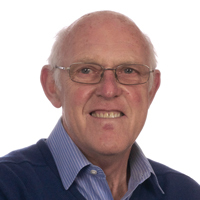
Professor Sir Michael Brady
Professor in Oncological Imaging in the Department of Oncology, University of Oxford
Progress in artificial intelligence is radically changing medical imaging techniques, easing the burden on over-stretched staff and speeding up diagnosis in the process.
Artifical intelligence (AI) is the buzz word of the moment, but Sir Michael Brady, Professor in Oncological Imaging in the Department of Oncology at the University of Oxford, is keen to point out that it’s not a new idea. Computer technology has been evolving since the 1950s, when the term AI was coined by the computer scientist, John McCarthy. “McCarthy said ‘today’s AI is tomorrow’s computer science’,” recalls Brady.
There is certainly no denying that medical science has come a long way in the last few decades thanks to the developments in computer technology. “When I was co-director of AI at MIT in the 80s we had one of the most advanced computing systems in the world. But the total computing power we had in that lab was still considerably less than I have in my mobile phone today,” says Brady.
AI can save money and time
Apply the power of computing technology to advances that have been taking place independently in image analysis and the opportunities to increase both the speed and the accuracy of imaging techniques are extensive.
By drawing on a bank of hundreds of thousands of images, machines have learnt to set parameters that differentiate things like texture and contrast in organs, tissue and bone to support diagnosis.
Brady is quick to point out that a growth in AI is not going to replace medical staff completely any time soon. “It would be unethical and improper to replace radiologists, but all these systems will help them do their jobs much better.”
Earlier diagnosis of lung cancer
Machines have learnt to set parameters that differentiate things like texture and contrast in organs and tissue, in imaging.
Its application in the detection of lung cancer is a good example of what the future could hold. Hundreds of nodules, most of which are harmless, show up when a patient has a CT scan of their lungs, and yet a radiologist will have to painstakingly go through each one to determine whether they are benign or malignant.
Brady has helped develop technology that will radically improve the process. “We’ve developed a system that can identify those [nodules] that are obviously benign. If you can cut by 50 per cent the number of nodules the radiologist has to assess, then you’ll save them half the time” says Brady. The company behind the technology believe that more than 4,000 cancer patients a year could get an earlier diagnosis as a result of the system, saving billions of pounds in the process.
AI in breast cancer balances fewer radiologists
The number of women screened for breast cancer is increasing, but the number of radiologists is decreasing.
Breast cancer diagnosis is another key area where AI could improve care. The number of women being screened for breast cancer is increasing, but the number of trained radiologists is decreasing. Considering it is mandatory in the EU that every mammogram is independently read by two qualified individuals, this is a concerning problem.
Help is at hand. “We have systems that can detect early signs of cancer,” continues Brady. “We have also run trials where we have taken radiologists with a range of experience and asked them to work blindly and then alongside the systems. We found that the systems helped to equal out their performance and could therefore help to reduce the postcode lottery.”
With breakthroughs in diagnosing heart conditions and alzheimer’s disease, it’s not just cancer patients benefitting from new imaging techniques. As Brady concludes, “There’s no reason to suppose we are anywhere near the limit of what AI and image analysis can achieve.” The best, it seems, is yet to come.


